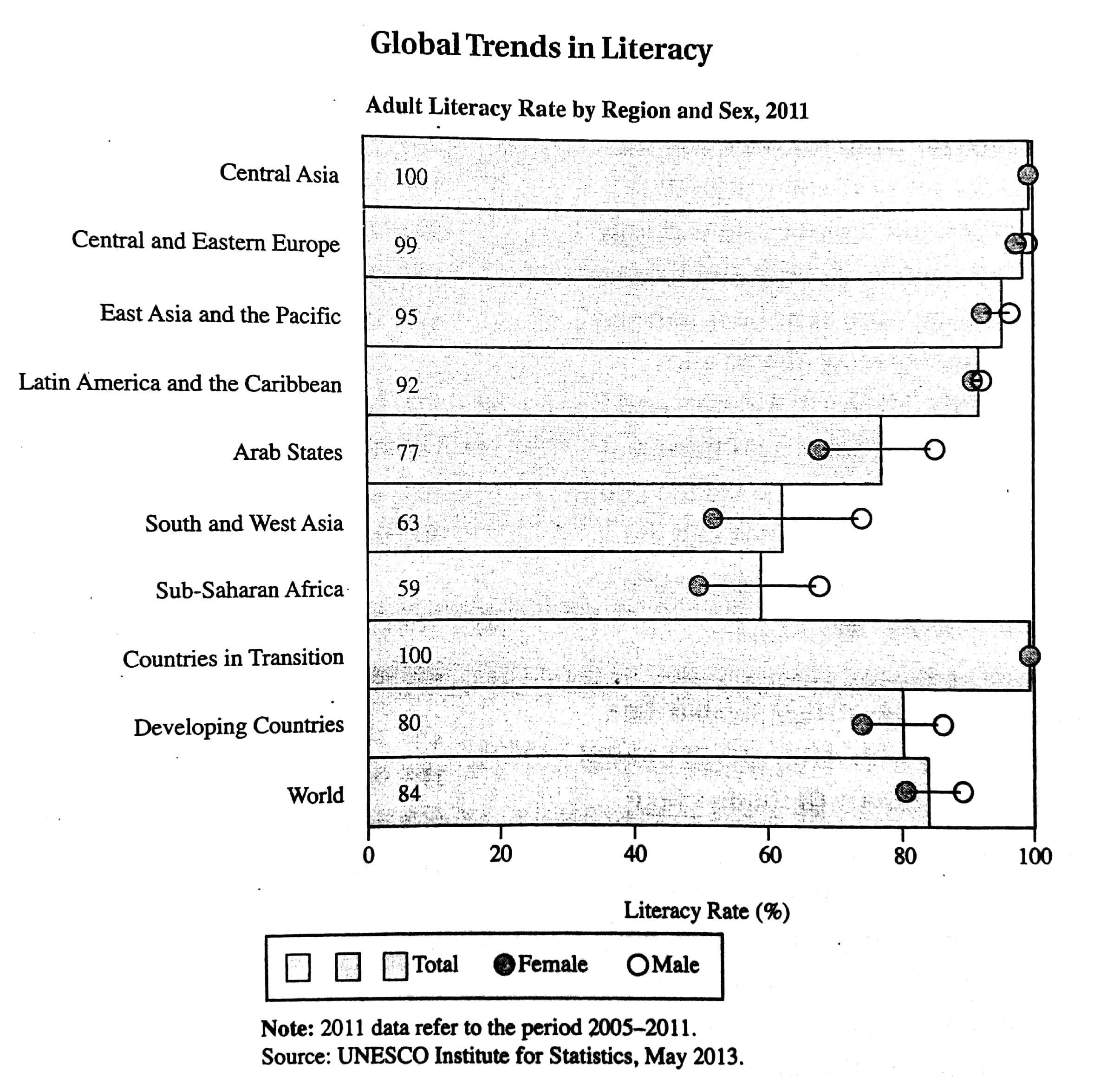
1/1
Global Trends in Literacy

In 2011, the global adult literacy rate for the population aged 15 years and older was [34] 74%. Regional averages of the adult literacy rate in 2011 were calculated for 151 countries and territories from eight regions, except [35] North America and Western Europe due to the limited number of countries in the region that report literacy rates.
[1] Adult literacy rates were below the global average in South and West Asia (63%) and sub-Saharan Africa (59%), where more than one-third of adults could not read and write. [2] However, the average for Latin America and the Caribbean [36] evades lower literacy rates in the Caribbean, where the adult literacy rate was only 69% in 2011. [3] Two regions, Central and Eastern Europe and Central Asia, were at or near universal literacy, with adult literacy rates of 99% and 100%, [37] consequently. [4] North America and Western Europe [38] also assumes near universal adult literacy. [5] In East Asia and the Pacific (adult literacy rate of 95%) and Latin America and the Caribbean (92%) at least nine out of ten adults were able to read and write. [39]
An examination of gender-disaggregated data reveals that in all regions with data, except Central Asia, female literacy rates were [40] higher than male literacy rates. The gap was especially large in the Arab State (male rate of 85% vs. female rate of 68%), [41] East Asia and the Pacific (male rate of 92% vs. female rate of 90%) and sub-Saharan Africa (male rate of 68% vs. female rate of 51%). Globally, 89% of men and 80% of women were able to red and write in 2011.
Adult literacy rates are projected to increase in almost all regions between 2011 and 2015. The exception is Central and Eastern Europe, where projections [42] implicate a small drop in adult literacy by one-half of a percentage point. The global adult literacy rate is projected to reach 86% i 2015, meaning that the target global literacy rate of 91%, a goal adopted by the World Education Forum in 2000, would be missed by 5%. Sub-Saharan Africa is projected to be [43] furthest from the 2015 target, and South and West Asia is projected to also come below the target for 2015. Central and Eastern Europe, Central Asia, and East Asia ad the Pacific are projected to reach or come within one percentage point of the 2015 target. [44]
Which choice most accurately represents the information in the graph?
NO CHANGE
East Asia and the Pacific
Sub-Saharan Africa
South and West Asia
正确答案:A
解析:
Which choice best describes what happens in the passage?
Which choice best describes the developmental pattern of the passage?
As used in line 1 and line 65, “directly” most nearly means
这就去做!